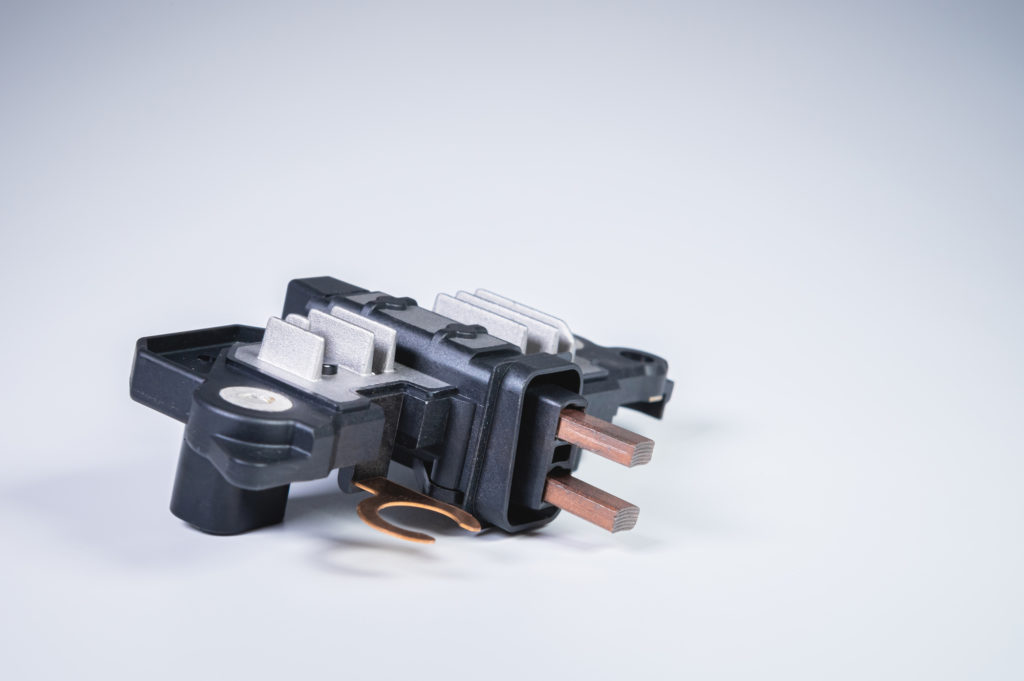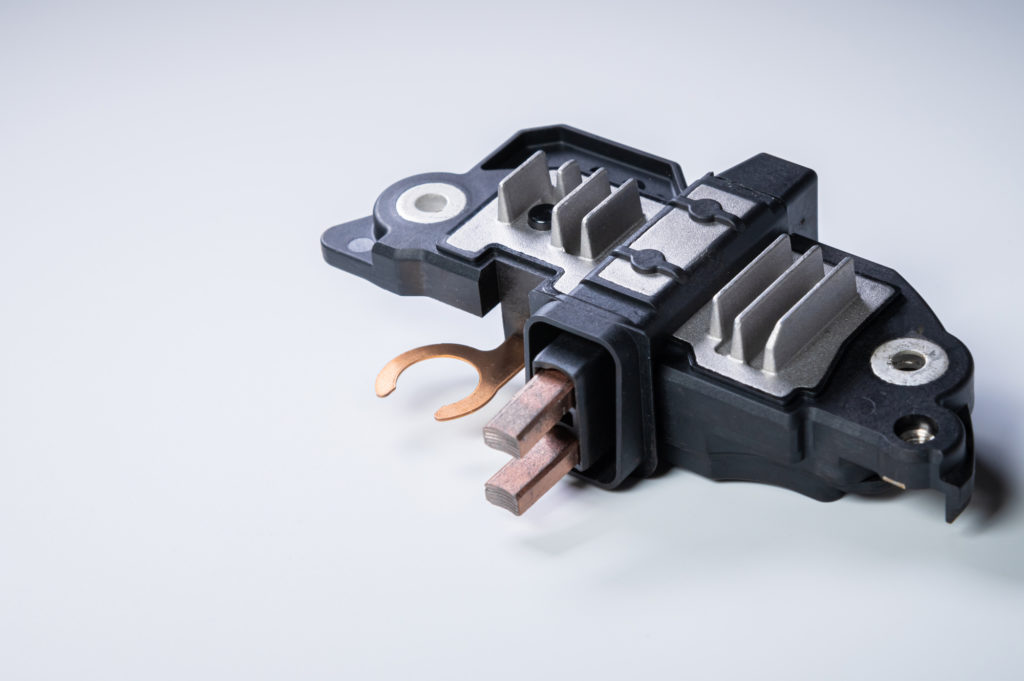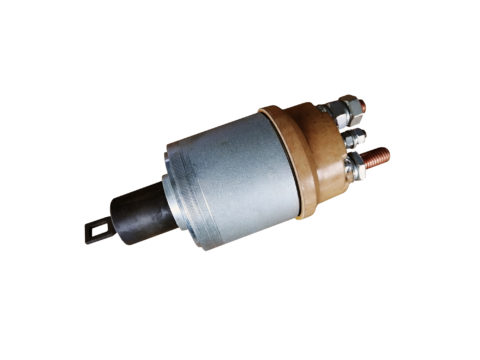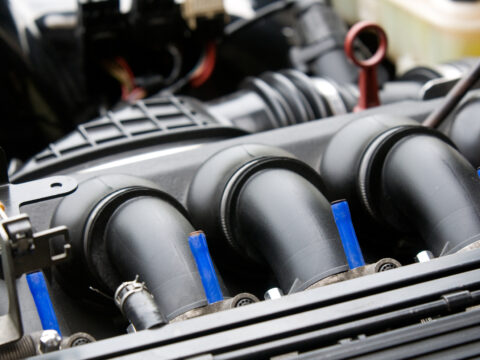Cars, especially in the modern age, have complex electronic systems. As a driver, it’s vital to understand how and why the electrical components work and what to do when things go wrong.
A bad voltage regulator could be the culprit if something is awry with your car’s electrical system.

Contents
What Does a Voltage Regulator Do?
The battery works to power the car and is the most crucial element. Your car’s alternator recharges the battery during the vehicle’s operation and ensures your car remains powered up.
The third component is a voltage regulator, a separate entity attached to the alternator.
The voltage regulator has an essential job for the alternator and the battery. The voltage regulator makes sure that the alternator produces enough voltage to charge the battery but not too much voltage that could result in damaged electronics.
What Happens When You Have a Bad Voltage Regulator?
When your voltage regulator is bad, the voltage to the battery and from the alternator is not balanced correctly for the electrical components.
Any electrical device could receive too much or too little voltage, causing damage.
Bad Voltage Regulator Symptoms
Several warning signs indicate that your car may be operating with a faulty regulator. It’s helpful to understand the symptoms of a bad voltage regulator to avoid being stranded by a dead battery or driving without essential working electrical components.
Some signs of a bad voltage regulator include:
- Battery problems
- Lighting issues
- Malfunctioning instrument center
- Warning lights illuminated
- Intermittent engine problems
Battery Problems
The voltage regulator could affect the battery in one of two ways. The voltage coming into the battery could be too low, causing the battery to discharge and die completely.
On the other hand, too much voltage could be received and damage the internal workings of the battery.
Lighting Issues
Lighting issues mean flickering lights or improperly functioning headlights or radio. In this scenario, the lights may be receiving too much or too little voltage.
Too much voltage will prematurely cause bulb failure, and too little causes lights to flicker.
Malfunctioning Instrument Cluster
A malfunctioning instrument center can be scary. You may notice your car has no RPMs and is going zero miles an hour. However, the vehicle is still running.
A faulty cluster signifies that the voltage regulator may need attention.
Warning Lights Illuminated
If the battery or check engine light comes on, and there is no viable explanation, this is a sign of a voltage regulator improperly functioning. These warning lights can be discouraging and misleading when they don’t explain the actual cause of the issue.
Intermittent Engine Problems
Diagnosing a bad voltage regulator due to intermittent engine problems can be more challenging. If this condition arises, your vehicle may lose all electricity only to regain it a few moments later.
So while your car dying from a dead battery could be caused by several other problems, in conjunction with other noticeable symptoms, the voltage regulator is likely the culprit.

What Causes a Bad Voltage Regulator?
When a voltage regulator goes bad, it could be indicative of a more significant problem. It could be that the part just ran its course, and it’s time to replace. This cause is typically the culprit based on the car’s age.
A few different reasons can result in a bad voltage regulator, including:
- Regulator reached the end of its life
- Corrosion on the battery connection terminals
- Overheating of an electrical component
- Excessive voltage input
- Damaged wires
Regulator Reached the End of Its Life
Often, a regulator has reached the end of life, and it’s time for a replacement. Normal wear and tear leading to mechanical failure are more likely the older the vehicle gets.
Corrosion on the Battery Connection Terminals
If you see corrosion on the terminals of your car battery, a faulty connection or improper flow of electricity could likely cause the voltage regulator to fail.
The battery will slowly decline, and the voltage regulator will be working too hard.
Overheating of an Electrical Component
A portion of the regulator’s job is to dissipate heat between the input and the output current. If this is not maintained, the voltage regulator works harder to ensure consistency.
On the other hand, too much heat will cause the voltage regulator to fail sooner.
Excessive Voltage Input
Excessive voltage input is a similar issue to overheating. Excessive energy turns into heat energy causing the regulator to heat up.
Too much heat will cause a voltage regulator failure sooner and will not adequately maintain the vehicle’s voltage.
Damaged Wires
A damaged ground wire can cause the regulator to fail. The electrical circuit is incomplete if the voltage regulator is not grounded correctly.
The voltage regulator cannot work properly without a complete circuit, like all other electrical components.
How Much is a Voltage Regulator?
A voltage regulator will run you anywhere from $20 to $200. This price variation depends on the vehicle’s make, model, and age. Additionally, you’ll need to factor in labor costs if you have a mechanic replace the part.
Voltage Regulator Replacement
You may decide only to replace the voltage regulator rather than the entire regulator and alternator combination. In that case, costs may be less for parts, but the labor may cost more.
Make sure you have a trusted mechanic install it to ensure its safety.
Can a Car Run With a Bad Voltage Regulator?
Yes, a car can run with a bad voltage regulator. However, how far it will run is a different story. If the voltage regulator isn’t working, the battery won’t recharge, and the car battery will eventually die.
Will a Bad Voltage Regulator Drain a Battery?
Yes, a bad voltage regulator will drain the car battery. If the battery under or overcharges, it will not operate properly.
Car batteries have a finite number of charging cycles before reaching end of life, so their re-charging cycles must go as flawlessly as possible.














